Xiong'an: the City as Showroom
A showroom for what and for whom? Infrastructural innovation led by state owned enterprises.
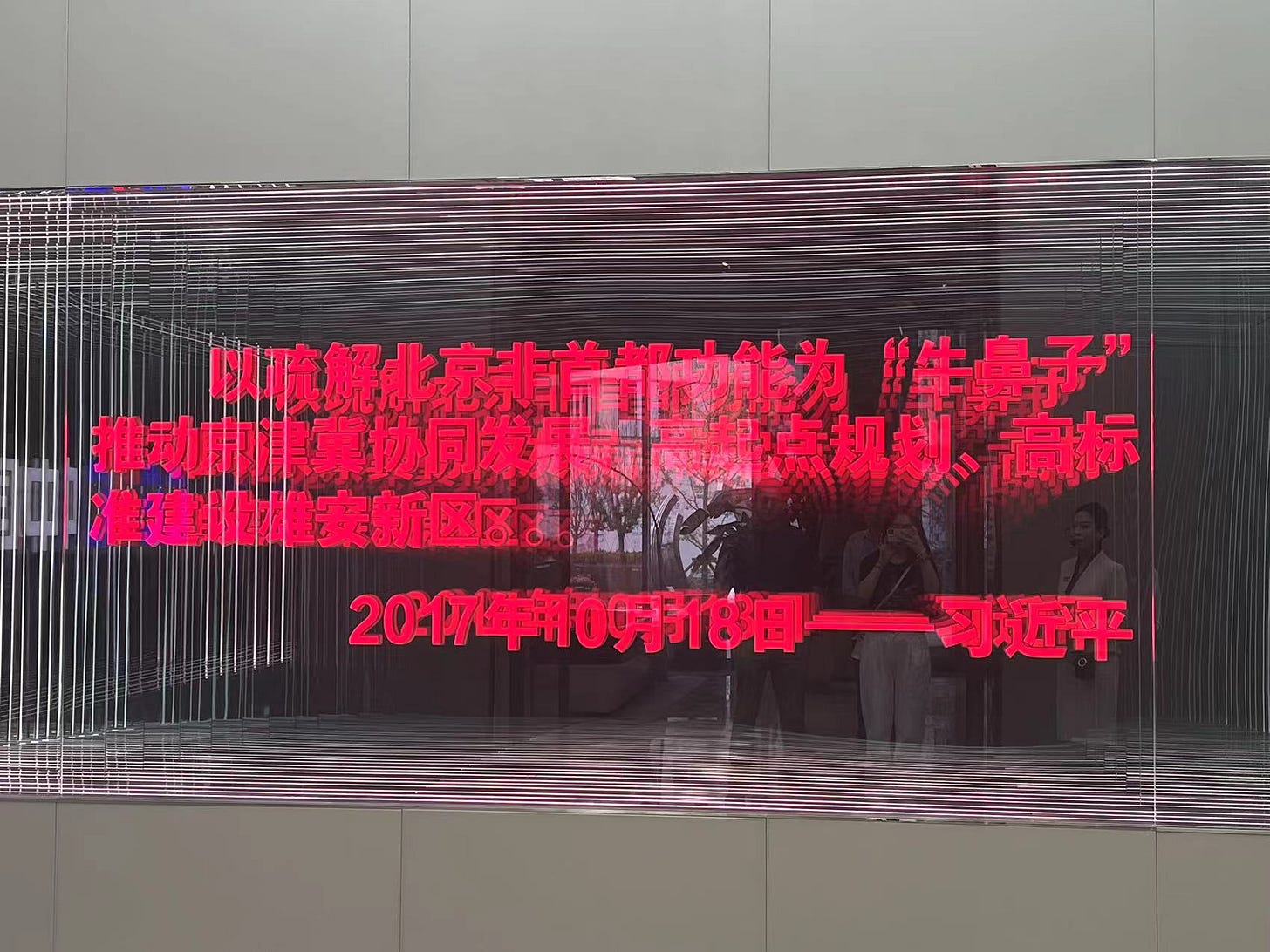
Urban exhibition halls, complete with large models of city buildings are a common feature in nearly every major city in China. But with Xiong’an, the entire city has become a kind of showroom.

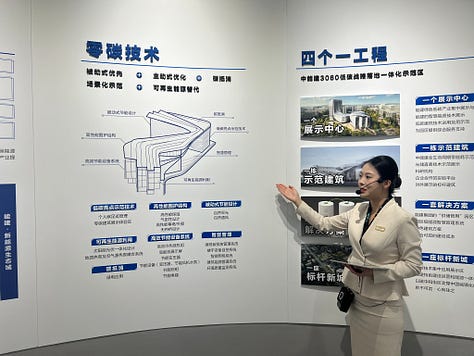
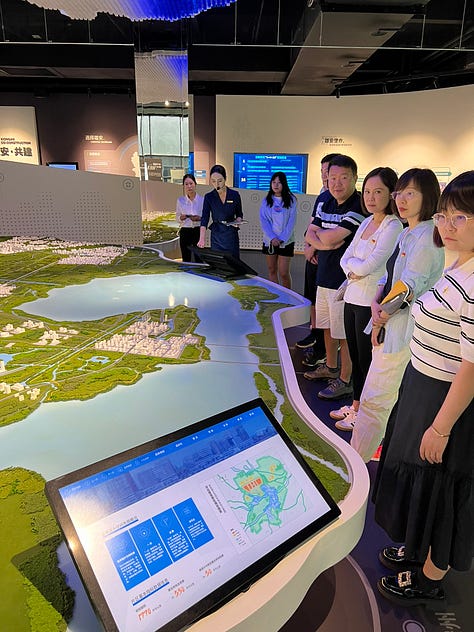
Let a hundred showrooms bloom 让一百展示馆开花
As with almost everything in China these days from restaurants to tourist attractions you must book a viewing of Xiong’an Impression 雄安印象 in advance on Wechat. The exhibit is hosted in Power China Science City, a mixed used project encompassing several blocks of the newly constructed Rongdong District of Xiong’an New Area. The area, like many parts of the city, has been developed by a large state-owned enterprise (SOE) Power China 中国电建, which builds power plants and other infrastructure both domestically and around the world. Having reserved a spot Saturday morning, I arrive at the lobby and am greeted by young women dressed in impeccably tight-fitting navy dresses. I am handed an earpiece from a silver serving tray, and I join the group of seven or eight others who have arrived for a tour of the exhibition about the city.
We are quickly shepherded into the first room where the woman guide reads from a script of the rich historical legacy of the region, beginning when the area was under the Zhao and Yan periods of the Warring States, to the heroic resistance of lake villagers against the Japanese army, to the founding of Xiongan in 2017. As we leave the past for the present, dramatic music begins. A VR experience projects the wetland of Baiyangdian on the floor and a screen as we fly over villagers rowing wooden boats through wetlands with floating lotus flowers and watch the city of Xiong’an rise in the distance. We are led past exhibits that position Xiong’an as the third new area of national significance, a model of the area’s development (the one in this exhibit is fairly crude and doesn’t depict actual buildings in detail). Then we are lead into final exhibit rooms where the guide quickly runs through a video demonstrating some of Xiong’an’s intended “smart city scenarios” on its intelligent operations center, a virtual bike ride along the cities streets, urban design features of its neighborhood design, before we are left in the lobby where you can purchase souvenirs which include tomes of Xi Jinping’s various works, and cute stuffed plushies.
Xiong’an Impression is actually one of many showrooms in Xiong’an, but it is the only one currently open to the general public and even easily bookable by foreigners via WeChat. Later on in the day I am taken to an Showroom of the Qidong District (the CBD) which was not bookable unless you had a Chinese ID, but a friend of mine who had worked in Xiong’an arranged for a quick visit—no photos allowed of course. This exhibit had a more detailed model of every planned building in the main downtown of Xiong’an, and with the actual plots marked by tenants if they had been claimed—headquarters for Sinochem, Huaneng, and headquarters for the four major banks in Finance Island. There was nothing here that seemed particularly secret, but that didn’t seem to reduce the general air of secrecy around the place. There was also a main Planning Exhibit Hall located in the Citizen Service Center, the first complex to be completed in Xiong’an housing headquarters for the local government and Xiong’an Group—the mega city-owned developer or chengtou developing much of the city and itself owned by Hebei Province. This exhibit was strictly off limits to almost anyone, and certainly to foreigners except for top leaders and dignitaries like a visiting Vietnamese delegation who had visited earlier in the year.
At a power station constructed by China State Grid 国家电网 and a subsidiary of Xiong’an Group 雄安集团 as a demonstration of green architecture and clean energy—which has a swimming pool and rooftop Chinese-style garden with a drone bird’s nest (a box apparently housing drones ready to fly out and inspect the premises at a click—two women told us the exhibit there was not open and had to be reserved in advance. So too for another exhibit at the “Xiong’an Eye”—the supercomputing cloud server 雄安计算中心 center that was the nerve center of the city’s smart city digital systems.
“If they’re using these showrooms to showcase the city, why are they being so secretive about this? What’s there to hide ?” I asked a friend of mine, who had an master’s degree from a prestigious US university and who had worked himself in Xiong’an for half a year.
“These aren’t primarily aimed at us, they’re mostly for leaders lingdaoren to see.”
Another former employee of a state-owned real estate company who lived in Xiong’an for two years during its early development (now living in the U.S.) responded when I asked him about several of the supposedly innovative technologies designed to be “displayed” in Xiong’an such as an autonomous market and autonomous bus system: “they are mostly for show” zhi shi weile zhanshi.
Later in the day I was able to visit one more exhibition hosted by China Energy Construction 中国能源集团, another massive SOE building a chunk of the area around Xiong’an’s massive and empty new high speed rail station. Two other large SOEs are also building projects here: China Rail Construction 中铁建 and China Communications Group 中交集团. Most of the multi block site that is to house commercial, residential, and research centers, was under construction. But a shiny metallic-clad pavillion had been completed at one corner of the site where the exhibition room was. Inside, two attractive young women in identical white suits greeted us and began the tour, walking us into a mirrored room that reflected 3D bright red characters of a Xi Jinping quote—it might have made for a hip nightclub in Berlin if I closed my eyes and imagined dank beets instead of the dramatic music played at these kind of places. I thought about asking questions along the tour, but that didn’t seem to be the point. We may as well have been getting a tour from an AI if I didn’t know any better. It would have been entirely on point with the techno-futurist high modern vibe of Xiong’an.
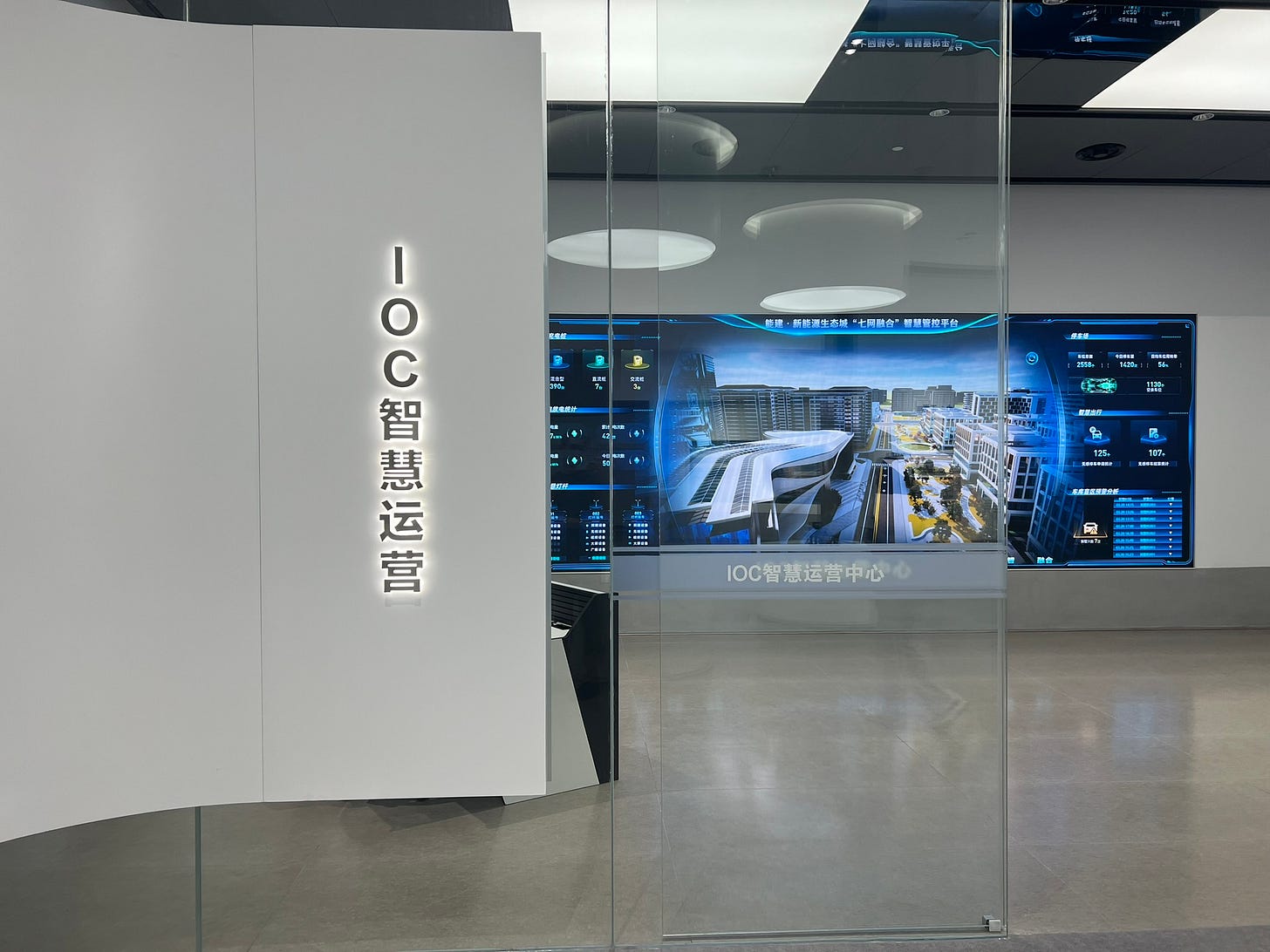
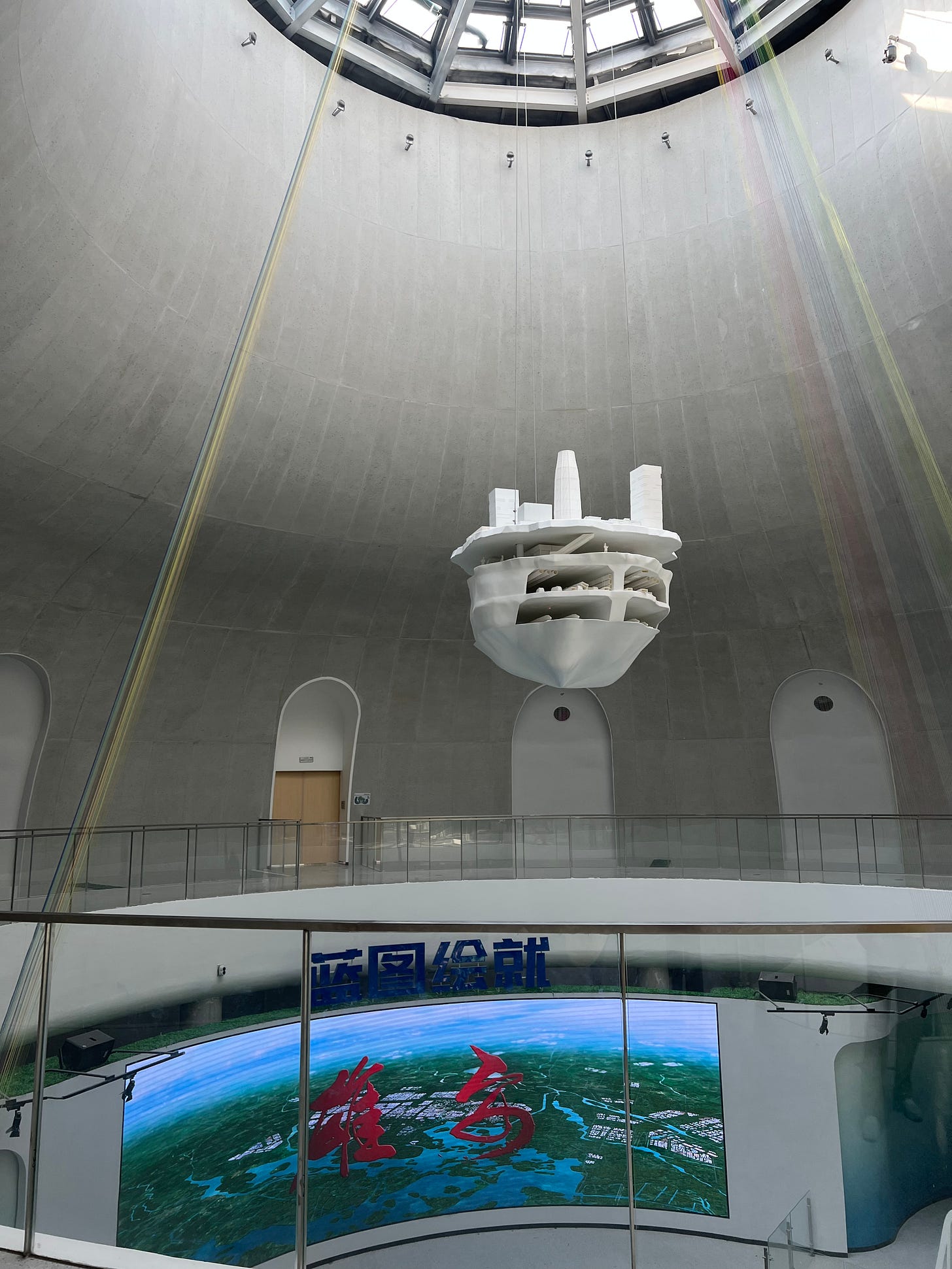
Showcases for SOE-Led Innovation
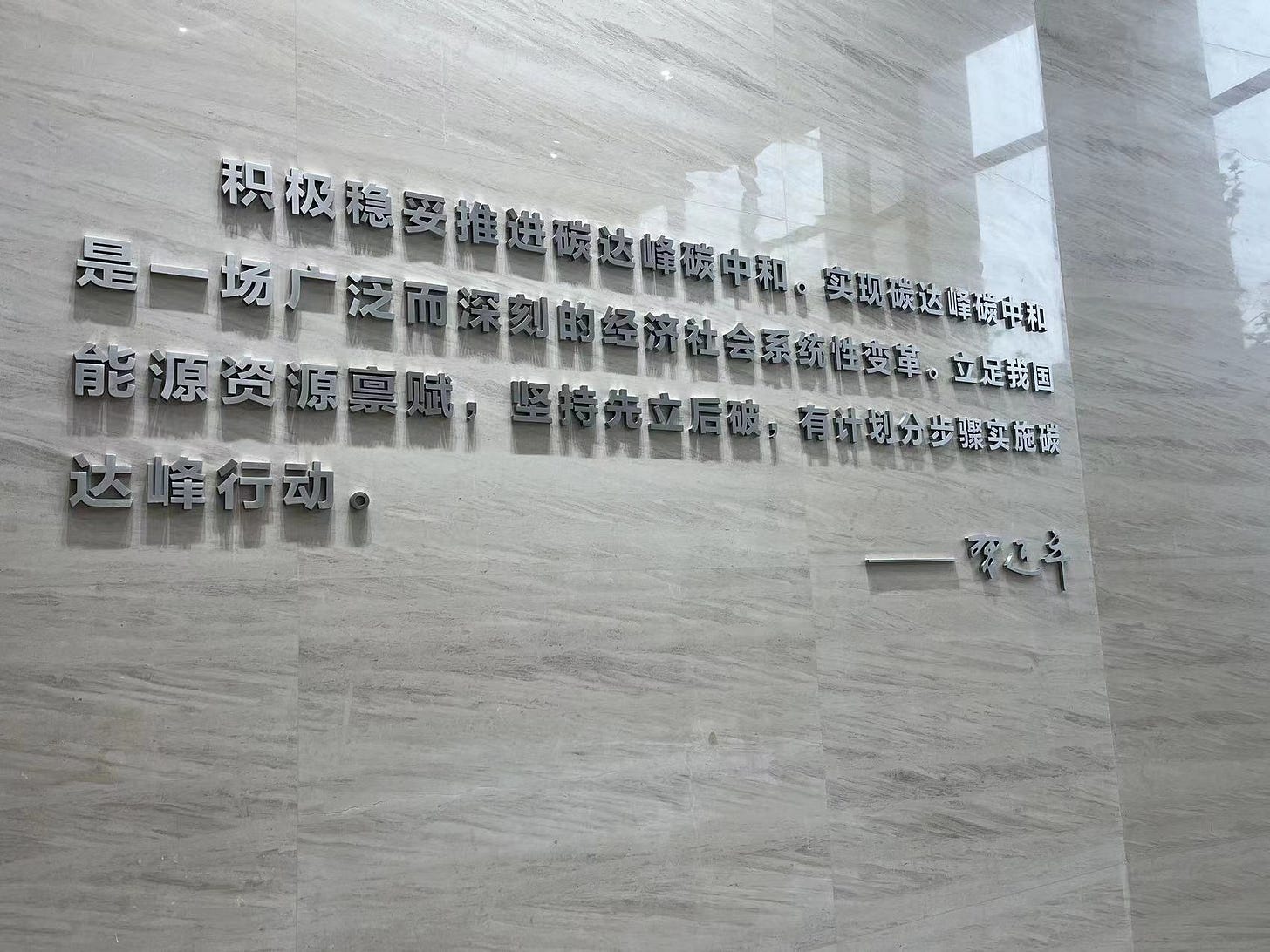
More than showcasing the city to the general public as with most general city model exhibits in China, many of the showrooms in Xiong’an are designed to showcase how a particular company (all state owned enterprises) is helping to construct a particular component of the city—whether digital systems, clean energy, green architecture. Xiong’an is intended as a city of innovation in technology. But this is a different ecosystem than Silicon Valley or even China’s successful high-tech clusters in Zhongguancun (Beijing) and Shenzhen. The development of Xiong’an is chiefly concerned with relocating state owned enterprises and research institutes from the capital. The idea is to create a new “high ground for innovation”, but one that is for now entirely driven by the Party State, and by state capital. In addition to headquarters and corporate research institutes, satellite campuses of the Chinese Academy of Sciences and of Zhongguancun’s own industrial park have already opened in Xiong’an. Even as SOEs have been seen and are generally thought to be much less innovative than private firms, Xi’s vision clearly has a big role for SOEs as drivers of China’s push for self sufficiency in advanced technologies in the face of Western export controls and declining foreign investment.
As a young man working for the Xiong’an Government told me, “the companies who are less affected by market forces are the ones who can move most quickly to Xiong’an.” When the city was announced in 2017, private tech titans Baidu Alibaba and Tencent all announced intent to invest in Xiong’an—JD opened an automated market wuren chaoshi. But none of these firms have invested meaningfully in Xiong’an. Nearly all the capital investment in the area has been central and provincial state capital—either from major state owned banks, central transfers, bonds, or capital investment of enterprises themselves. A decent number of companies in Xiong’an will work on industries seen as crucial for national defense—China Satellite Communications 中国星网 is one of the first headquarters to near completion. Datang Group, 大唐集团 which manufacturers telecom equipment for the mobile operators and military, has also announced plans to move to Xiong’an.
Urban exhibition halls, complete with large models of city buildings are a common feature in nearly every major city in China. But with Xiong’an, the entire city has become a kind of showroom. The target audience is not the general public. Rather the city has become a space where ideal visions of a future city as template 样板 for “Chinese style modernization” 中国式现代化 or “high quality development” 高质量发展 (insert your favorite recent slogan here) is modeled and communicated to officials, companies, and leaders in China. The city is a didactic tool to communicate an ideal vision of a future Chinese city, built with Chinese planning and architecture elements, freed from an obsession with copying international Western ideas of modernity, and increasingly focused on innovation in infrastructure-related sectors: clean energy, intelligent roads, green buildings, smart cities and digital twins.
Exhibitions in Xiong’an I visited:
Xiong’an Impression 雄安印象 (中国电建智慧城, 容东片区)—can be booked on Wechat
Xiong’an Qidong District Exhibition 雄安启动区展示中心
Xiong’an Country Park 雄安郊野公园展示馆
Xiong’an China Energy Construction Exhibition 中国能源集团 (高铁站区)
Exhibits I wasn’t able to visit (may be more than listed below)
Xiong’an Planning Hall (main city model) 雄安规划展示馆
Xiong’an Cloud Computing Center 雄安计算中心 (雄安只眼)
Xiong’an Power State (China Grid) 国家电网变电-站居村站展示馆





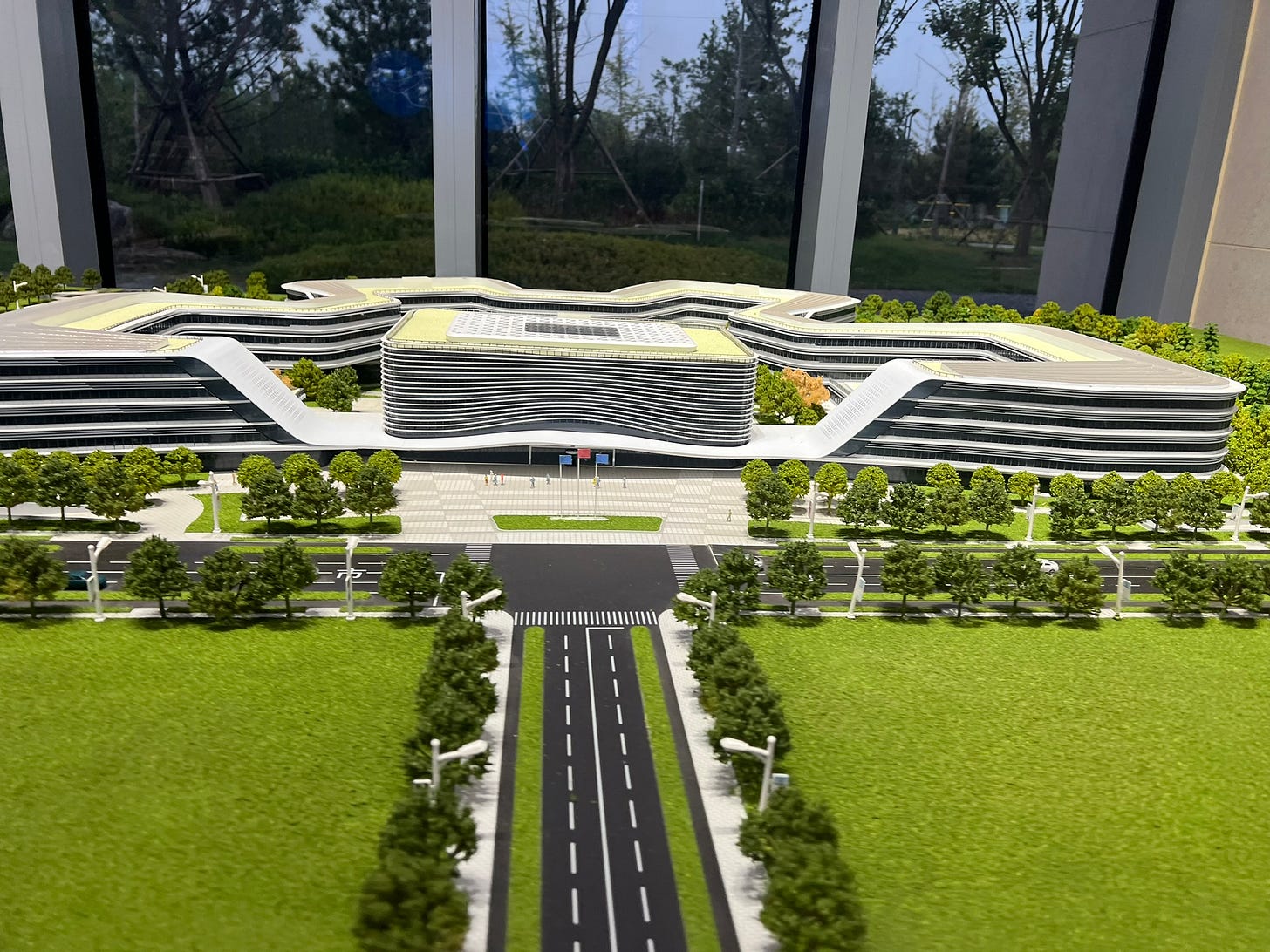
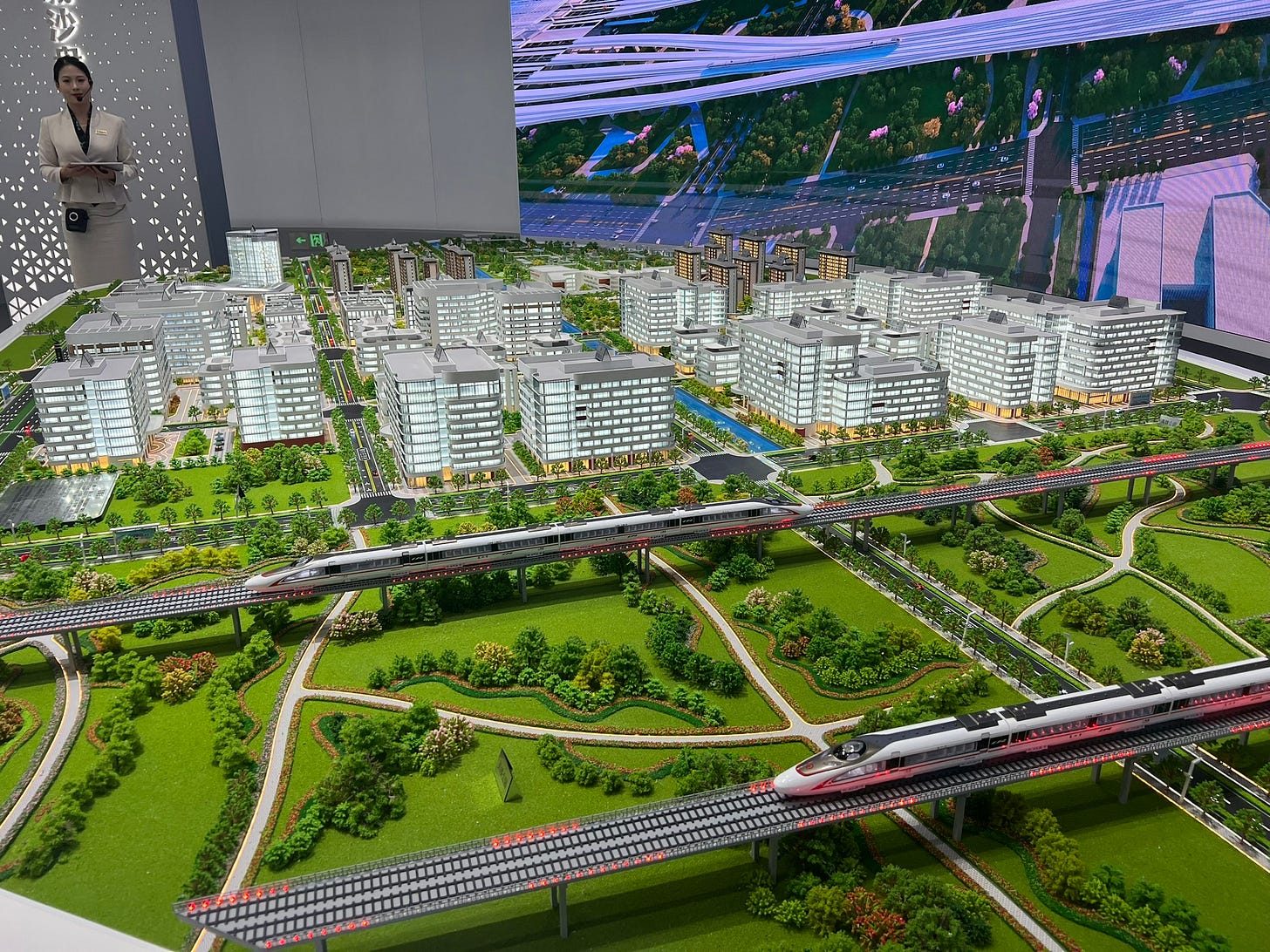
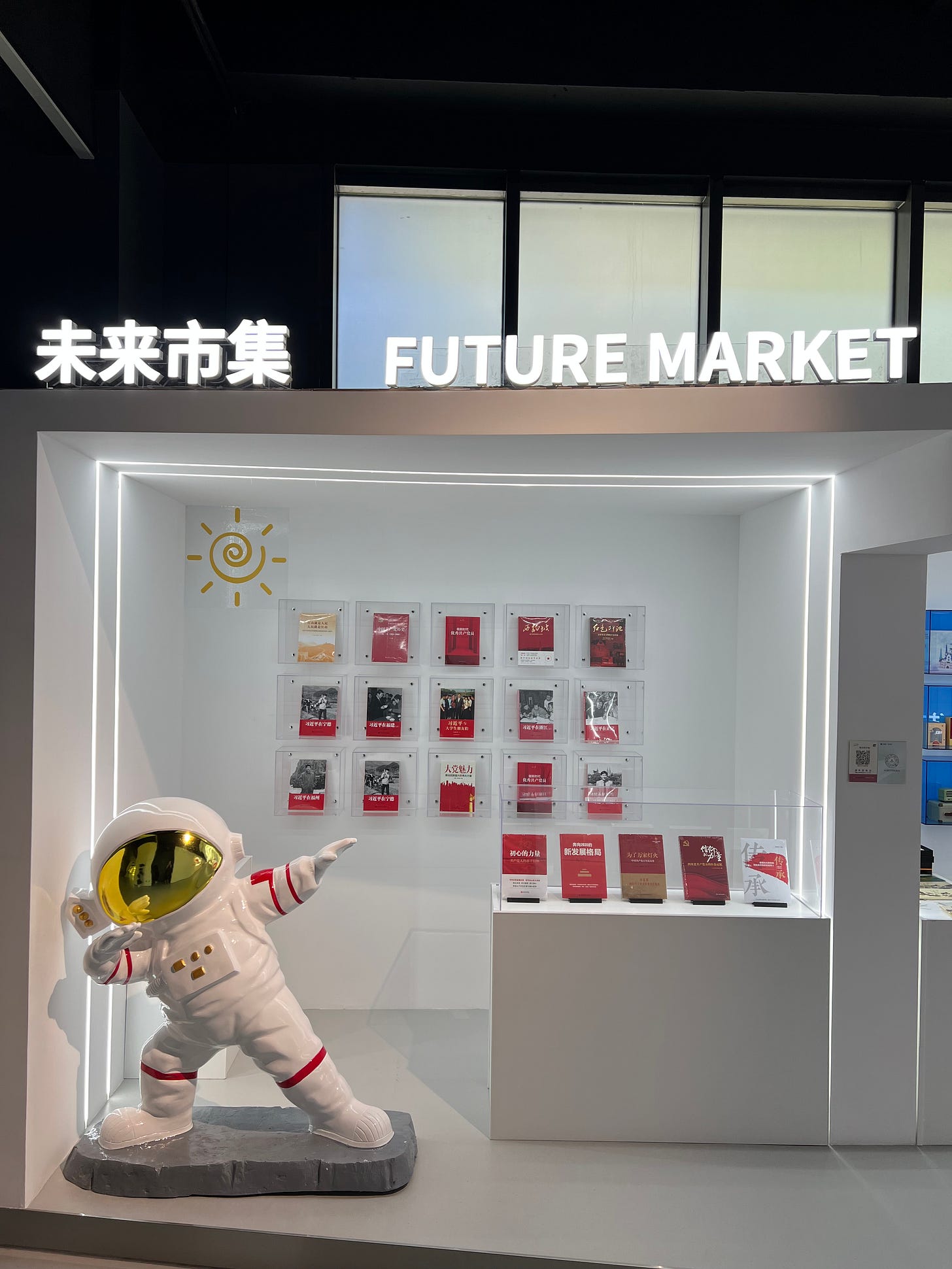
Seems the opportunity to create something new has been lost to shortsightedness about what cities should look like. So sad for China’s leadership. “The idea is to create a new “high ground for innovation”, but one that is for now entirely driven by the Party State, and by state capital. Even as SOEs have been seen and are generally thought to be much less innovative than private firms, Xi’s vision clearly has a big role for SOEs as drivers of China’s push for self sufficiency in advanced technologies in the face of Western export controls and declining foreign investment.”
I enjoy China's urban planning exhibition halls, too, but I think they're useful more for understanding the overall image the government is seeking to project of the city than for understanding what the city is actually like on the ground.
Based on what I can see on Google Earth, it looks like much of the urban fabric of Xiong'an has already been laid out. I'd love to see an account of what it's like to actually walk Xiong'an's streets. When I zoom in on Google Earth to look at how the streets of Xiong'an are laid out, I see the same mistakes (i.e. intersections that prioritize fast car movements at the expensive of pedestrian safety) that are common in all newish urban districts all over China repeated yet again. That seems like a huge missed opportunity. This city may have "smart city" wiring, but it does not appear to be very smart in its street design. I guess the city's designers expect that everyone will just drive everywhere and no one will bother experiencing the city by foot, which is a shame because Old Beijing is a very walkable city.
Take for example the intersection of 海岳大街 and 白洋淀路 (39°02'33.65" 115°56'40.53"E). Imagine putting yourself in the shoes of a pedestrian trying to cross this behemoth on one of its crosswalks. It's a daunting prospect for the most able-bodied pedestrian, let alone someone of advanced age or physical disability.